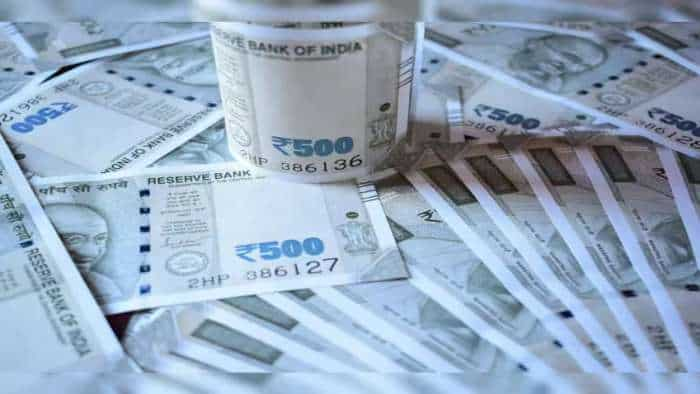7 important things to take care before you file your tax return on last day
Return filing is nothing but a declaration from your side to the government and it reports your income from all the sources as specified under the income tax act as earned during the previous year.

Tomorrow i.e. 31st July, is the last day for you to file your tax returns for the previous financial year i.e. 1st April 2016 to 31st March 2017.
Why return filing is important even if you say being a salaried person have already paid your due taxes by way of TDS form your employer. The main reason is that return filing is nothing but a declaration from your side to the government and it reports your income from all the sources as specified under the income tax act as earned during the previous year.
This is indeed simple but still many taxpayers get worried and also ends up messing up their income tax returns mainly due to lack of knowledge about tax rules or simple lack of discipline to file their returns in time.
So, how can you avoid these simple to grave mistakes? Let’s understand in detail: -
Don’t forget to disclose “CASH DEPOSITS” post DEMONETISATION:
If you have deposited more than Rs. 2Lac cash in any of your bank accounts post demonetization then the same needs to be reported while filing your tax return. I am sure that you are aware that Income Tax Department is already in receipt of your cash deposit details and it will be matched with the information as disclosed by you. In case of any mismatch of this reporting, notices will be sent across to all those individuals. Please note, you will get in to serious issues, if you do not report your cash deposits and the penalty for non or misreporting would range from 50% to 200% of your under reported income.
In fact, one can be prosecuted as well for any false reporting and even apart from this specific cash deposit, your Banks anyways report to the government for any cash deposits for more than Rs. 10 lacs in a financial year by any individual.
Mention & Link Your Aadhaar No. While Filing Your Tax Return:
As per the rules, you cannot file your tax returns without linking your Aadhar card to your income tax account, so now there is no choice whether to link or not, you cannot file your tax returns without linking. Only in case you do not have the aadhar card then you must apply for the same and provide your “Enrolment Id” of your Aadhar card application.
Disclose your Asset-Liability Statement & Foreign Assets:
There are two things here, one is to disclose all your foreign bank accounts details like account opening date, interest as accrued etc. You need to declare the same as per the specific format given under the schedule. Other thing is applicable to those whose taxable income is above Rs 50 lacs during the last financial year. They need to mention their assets and liabilities details which comprises of all their financial assets & liabilities.
Assets list includes cash in hand i.e. amount lying in your savings account, details of vehicles, jewelry, or other valuable metals. Financial assets also cover your insurance policies, loans given to others, FDs & shares.
Don’t forget to check your 26AS:
I am sure you must be aware about 26AS, it has been there since last many years now, in short 26AS is nothing but a declaration statement from the government which confirms all the tax as credited to your account from various sources. You need to verify your tax deducted with this to confirm that all the deducted tax has been duly credited in your account. For example, your employer has deducted the Tax on your salary, you might have paid advance tax on your other income and there could be TDS on interest on FD interest, everything must be duly credited to your account.
In case of any discrepancy you need to notify the person i.e. the deductor to get it rectified. Once you file your tax return, the income tax department will reconcile details as given in your return with the credits as appearing in your form 26AS.
Choose The Right Form for Filing Return:
Since there are multiple forms to select from, there is always a confusion amongst the people about which form to select for filing their tax return. Let’s understand:
ITR-1/SAHAJ: You need to use ITR-1/SAHAJ only if you have Income from salary/pension and rental income from only one house property and Income from other sources like bank interest/dividends etc. But you cannot use the same in case you have any carried forward losses or if your income is more than Rs 50 lacs, you have foreign assets, agricultural income of more than Rs. 5,000 or you have capital gains or income from business or profession.
ITR 2: If you have income from salary/pension or income from multiple house properties , capital gains and income as mentioned in the above point. Do not use this if you have business or professional income.
ITR 3: If you have income from your sole proprietary business or a professional income then use ITR 3 but this also cannot be used for presumptive taxation tax filing for which you need to use ITR-4S.
Don’t forget your bank savings and FD INTEREST:
You need to add all the interest income as earned during the previous year even though there must be a tax already deducted on your FD interest, remember the fact that TDS is only 10% and if your income is under a higher slab then you need to pay the balance tax.
Report income from all the employers in case of a job change:
Whenever you change your job, you may see a drop in your tax deduction which is primarily because of the fact that your new employer might not take into account all your income earned from your earlier employer and other sources. You end up getting most of the benefits like basic exemption of Rs. 2.5 lacs, lower tax slabs i.e. 10 & 20% and section 80C plus other benefits given away twice or across all the jobs change you did last year. You need to combine all the income and compute your taxes and pay the balance if any.
Rishabh Parakh is a Chartered Accountant and the Chief Gardener & Founder Director of Money Plant Consulting, a leading Tax & Investment Planning Advisory Service Provider. He also runs a personal finance blog called “Mango Investor” aka AAM Niveshak at www.mangoinvestor.com.
Get Latest Business News, Stock Market Updates and Videos; Check your tax outgo through Income Tax Calculator and save money through our Personal Finance coverage. Check Business Breaking News Live on Zee Business Twitter and Facebook. Subscribe on YouTube.
RECOMMENDED STORIES

Want to use market crash as a buying opportunity? Analysts suggest buying Bharti Airtel, HDFC Life and 3 more shares for up to 39% gains
01:23 PM IST










 Zomato gets Rs 803.4 crore tax demand from GST authorities
Zomato gets Rs 803.4 crore tax demand from GST authorities  Income tax refunds jump 46.3% to Rs 3.04 lakh crore in April-November
Income tax refunds jump 46.3% to Rs 3.04 lakh crore in April-November No proposal on income tax relief for senior citizens under consideration: Centre
No proposal on income tax relief for senior citizens under consideration: Centre  Income tax return filer base up 2.2 times in 10 years, 5 times growth in Rs 50 lakh-plus income category: Sources
Income tax return filer base up 2.2 times in 10 years, 5 times growth in Rs 50 lakh-plus income category: Sources  This is India's only tax-free state, residents earn crores without paying Income Tax
This is India's only tax-free state, residents earn crores without paying Income Tax